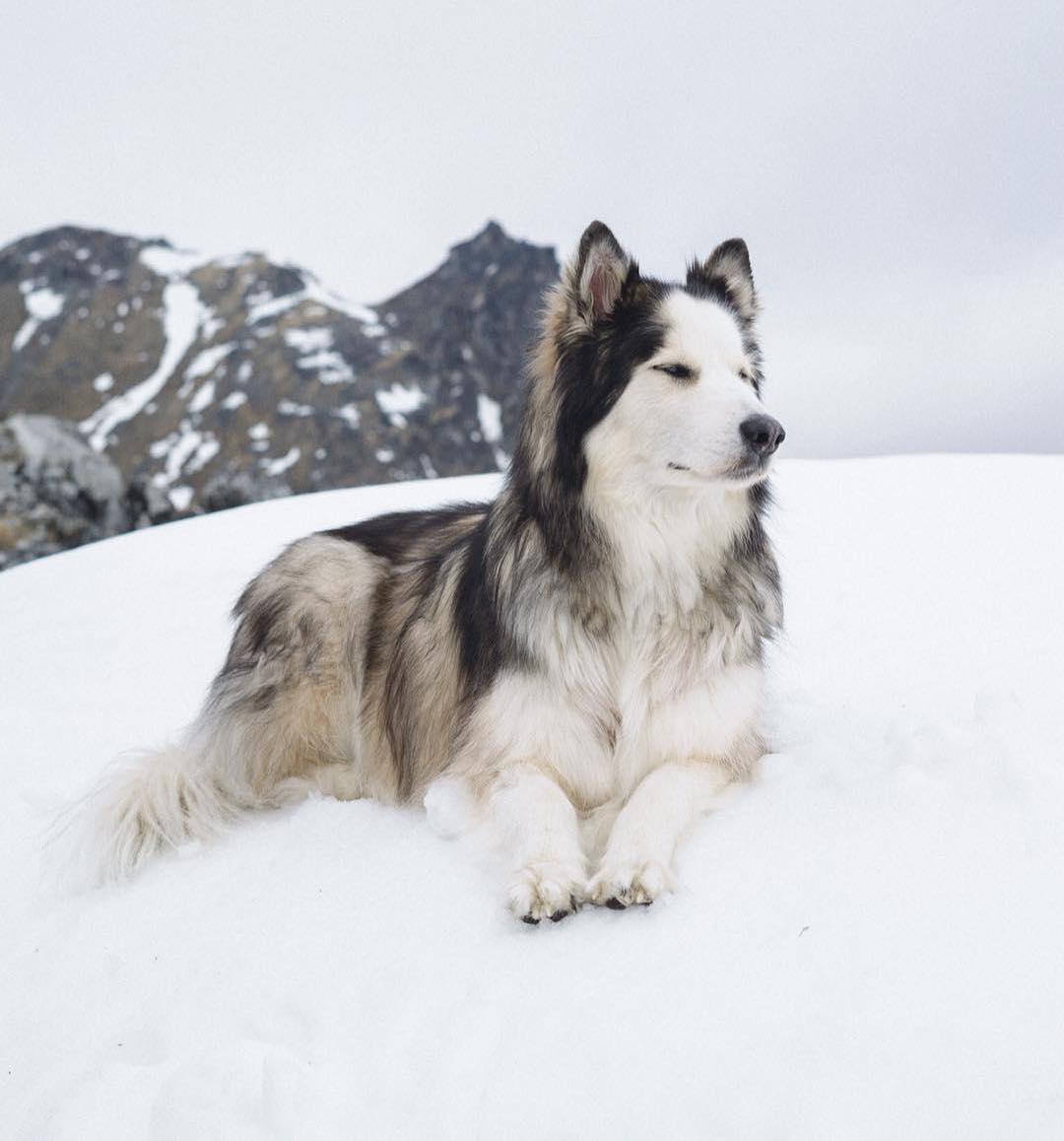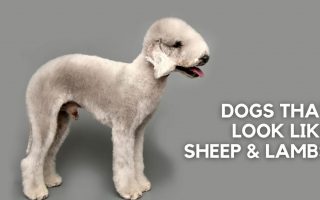Those who know me are aware that I love dogs! In fact, some days, they are all I want to talk about!
And the most frequent discussion my dog-loving friends and I have is regarding Belgian Tervuren vs. German Shepherd.
Undoubtedly, both these dog breeds are unique. But it is always fun to compare the two and identify their differences and similarities.
I realized that a lot of people might be having the same discussion. Also, many people want to know which is better for adoption.
Hence, I compiled a detailed guide to compare the two dogs and list their familiar and different aspects.
So, if you are interested to know what these dogs look like, their temperament, and other exciting features, you will find everything below!
| Attributes | German Shepherd | Belgian Tervuren |
| Good For First Time Owners | Yes | No |
| Good Guard Dog | Yes | Yes |
| Apartment Friendly | Yes | With Enough Exercise |
| Good Family Dog | With Training | Yes |
| Shedding | High | Moderate |
| Barking And Howling | Moderate To High | Moderate |
| Height | 22-26 inches (55-65 cm) | 22-26 inches (56-66 cm) |
| Average Life Expectancy | 9-13 Years | 12-14 Years |
[wpsm_toplist]
The Mighty Belgian Tervuren
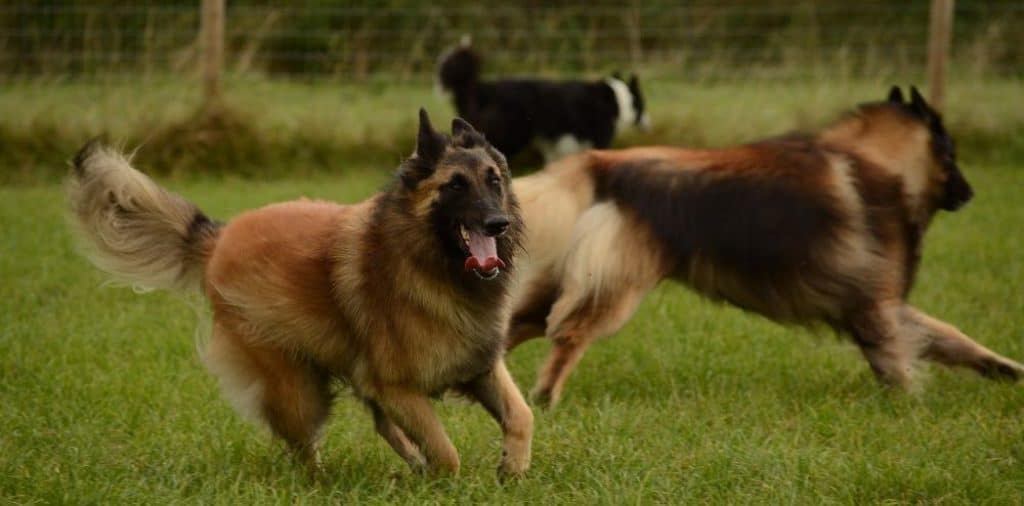
Belgian Tervuren is a gorgeous dog breed and is wildly popular in many parts of the world.
But apart from being physically attractive, it is an interesting species with many other remarkable characteristics.
Let’s look at the fascinating history and other personality features of this Belgian dog:
History
The Belgian dog emerged in Belgium (obviously!) around the early 1800s.
It was a breed that resulted from Poes and Tom breeds, and both the parent dogs have a beautiful fawn color.
The first-ever Belgian Tervuren bred in its history was a female.
She was called Miss, who eventually became a mother to Milsart, a handsome male Belgian Tervuren.
And that is how the gorgeous dog breed of Belgian Tervurens initiated!
Appearance
Those who have seen and met a Belgian Tervuren are always in awe of what this handsome dog looks like!
The dark brown almond eyes are intense, and the triangle ears are erect.
They are strongly built and very muscular, giving them a robust, empowering personality.
The body has an overall square appearance because of the hind legs, forelegs, and top-line alignment.
Since the bones are medium-sized and lightweight, their gait is effortless and impressive.
These dogs also have long, straight outer coats and dense undercoats.
The former has a beautiful fawn color and black overlays; this combination makes a beautiful blend and gives the dog a rugged but majestic look.
The most notable difference between male and female Belgian Tervurens is that females look comparatively dainty while males are more masculine and robust.
Lifespan
Belgian Tervurens are known to live around 12 to 14 years on average. However, this lifespan varies among different dogs of the species.
Factors that influence their life expectancy include their genetic makeup and the environment that they live in.
Other factors include what they eat, where they live, how these dogs are treated, whether they have companions and other external features.
Pathologies, disorders, and infections can also be unfortunate incidents that can reduce the years from a Belgian Tervuren’s life.
Temperament
The Belgian Tervuren is a robust and masculine dog in both its appearance and its personality. The dog is attentive, energetic, and very alert.
Hence, it is a great companion for people who like to go on adventures or want someone to guard them and their property.
Apart from being brave and protective, these dogs are also very loyal and intelligent. So, they’re easy to train and entertaining to be around.
Belgian Tervurens are overall fun and enjoyable. They’re only known to be aggressive when they sense a threat or when they’re around strangers.
Otherwise, they stay calm and happy. They are also very attached to their human families and become protective of them very quickly.
All these characteristics make it an incredible family dog.
Care
Belgian Tervurens like being in the company of those they are comfortable with.
Hence, they prefer staying indoors with the family. However, they also like being outside occasionally.
Herding, running, and playing around are some of their favorite outdoor activities.
As for their physical maintenance and care, occasional brushing and washing can help maintain the brightness of the coat.
It is especially essential when the dog is shedding.
Health Concerns
The Belgian Tervuren is not a hypoallergenic dog. It sheds hair and can produce allergic reactions in people.
As for its health issues, Tervurens are prone to canine hip dysplasia, hypothyroidism, allergies, elbow dysplasia, and progressive retinal atrophy.
Unfortunately, some more significant problems like seizures are also found among Belgian Tervurens.
They are also known to be affected by pannus, cataracts, persistent pupillary membranes, and hemangiosarcoma.
Hence, regular visits and examinations by a veterinarian are recommended for Belgian Tervurens.
The Remarkable German Shepherd
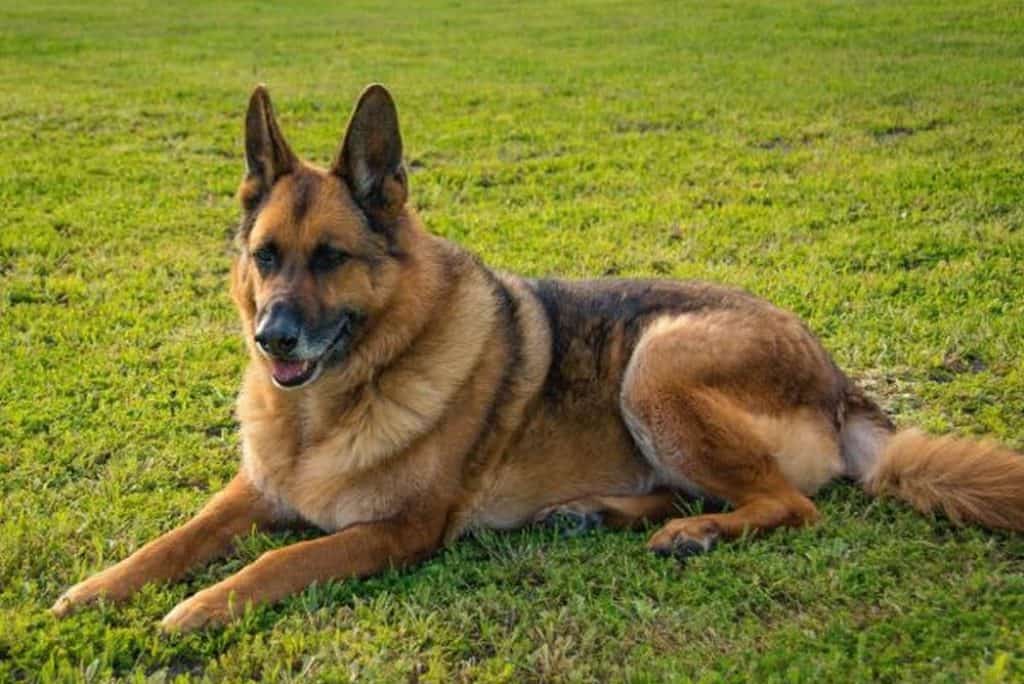
So, we have discovered everything there is to know about the Belgian Tervuren.
Now, let’s move on to the second part of our Belgian Tervuren vs. German Shepherd debate- the German Shepherd!
History
German Shepherds, as the name implies, originated from Germany. The breed emerged around the same time as the Belgian Tervurens- the 1800s.
Max von Stephanitz, an ex-cavalry officer, experimented by breeding rural Germany’s working sheepdogs.
His intention behind creating this breed was to “formulate” a dog ideal for long periods of trotting and herding.
So, he implemented his idea, and the result was a gorgeous German Shepherd.
I would also like to clarify a misconception that a lot of people have. Some wrongly consider that German Shepherds are somewhat related to wolves.
Indeed, 99% of a German Shepherd’s DNA is similar to a wolf’s DNA, and they are genetically very close.
However, despite this, German Shepherds are not part wolves; they are only the descendants of the gray wolf.
Appearance
German Shepherds have a very memorable appearance and personalities. They have a leveled and muscular back with a curved and bushy tail.
Their head is square, and their muzzle is long. Plus, their ears are pointy and erect, giving them a confident personality.
Moreover, they have a rough and thick coat, which can come in a variety of colors. Some common color combinations include black and grey and black and tan.
Sometimes, they are all-tan or all-black. The coat is typically harsh and medium length.
The German Shepherd has two primary varieties: American German Shepherd and German Shepherds.
The latter bloodline produces heavier dogs that have longer coats and straight backs and legs.
Overall, these dogs are strongly built and have a powerful, intimidating appearance.
Lifespans
German Shepherds typically live from 9 to 13 years.
However, many dog owners have reported animals living up to 17 and even 20 years of age. How is that possible?
Let me explain:
You see, larger dogs have bulkier bodies.
It means that they utilize more energy, consume more effort, and put significantly more strain on their bodies.
Hence, they live a shorter life than smaller dogs that don’t put much effort into moving around.
Of course, living conditions, care, and maintenance do have an overall impact on how long the dog lives.
But regardless of how well you take care of a bigger German Shepherd, it is highly unlikely and practically impossible for them to live longer than 15 years of age.
Temperament
German shepherds are intelligent and curious dogs. They like to inquire and investigate everything.
So, they look around their surroundings and observe everything and everyone very closely. These dogs stay alert and oriented.
Hence, they are excellent watch and guard dogs. They are courageous, brave, loyal, and very strong.
So, they can put on a great show when they observe a stranger or encounter a threatening situation.
These dogs are confident and stubborn, meaning that they do not back out or leave their companions alone in dangerous situations.
But all these characteristics do not make the dog paranoid.
German Shepherds are enjoyable and fun-loving dogs that can have a great time outdoors and with the people they are comfortable with.
They like spending time with the family, and they are excellent family dogs.
You can have a great time with them while being sure that they will guard and protect you.
An important thing to remember about the temperament of German Shepherd is that they need to be trained.
If you don’t keep them in check, they can quickly develop unhealthy habits and bad manners.
However, this is true for any other dog breed, so don’t let it misguide you into thinking that German Shepherds are any different from other dogs in terms of behavior.
Care
Because of their thick fur, German Shepherds require thorough brushing sessions once or twice a week.
They also require constant supervision since they are curious and excited dogs. They tend to explore and go on adventures, so you must watch them like a toddler!
Teeth brushing is also an important part of their routine care. German Shepherds usually have good oral health and teeth, and you can maintain this perfection through weekly or biweekly brushing.
As for the ears, a weekly cleaning session is essential even when these dogs are puppies.
Overall, German Shepherds can be high-maintenance since they require constant and regular grooming.
Health Concerns
German Shepherds shed all year long. In fact, they are pretty famous for their shading characteristics!
Twice every year, German Shepherds shed heavier than usual since they blow their entire coat.
Needless to say, they aren’t hypoallergenic, so people who have allergies can be triggered around these dogs.
So, if dander and dog fur tend to irritate you, a German Shepherd might not be the right choice for you.
As for the common health issues among these dog breeds, they are prone to several disorders.
Bloating, epilepsy, diabetes, cataract, hip dysplasia, elbow dysplasia, degenerated disc disease, and hemophilia are only some of the many common health problems that German Shepherds can encounter in their life.
Belgian Tervuren vs. German Shepherd – What Are The Differences?
| Belgian Tervuren | German Shepherd |
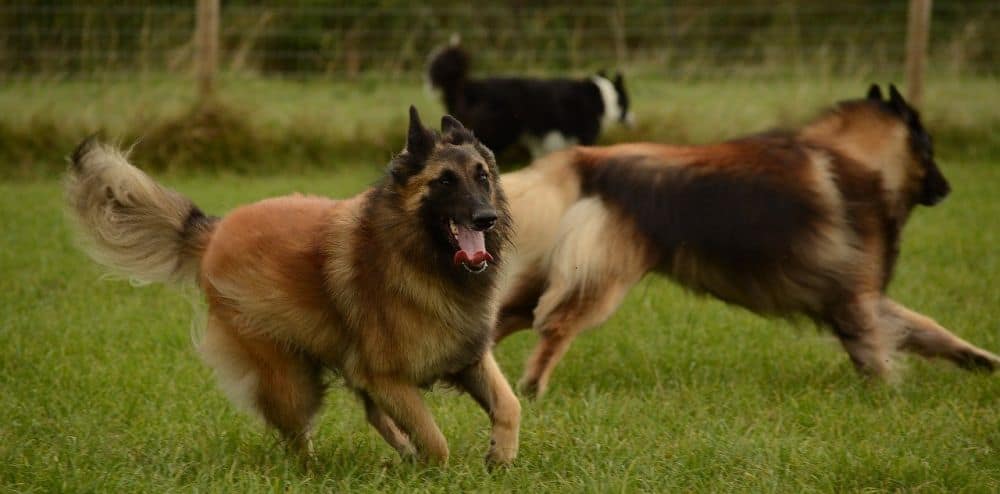 | 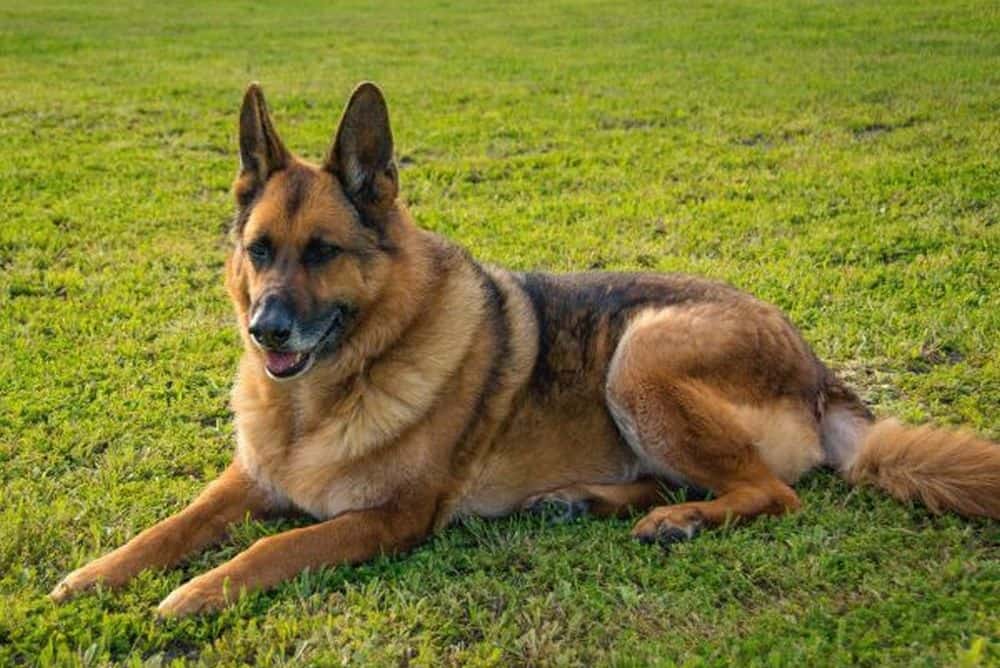 |
Now, we have discussed the individual characteristics and traits of both Belgian Tervurens and German Shepherds.
So, let’s talk about what differentiates these two incredible dog breeds and conclude the Belgian Tervuren vs. German Shepherd discussion once and for all:
Popularity And Lifespan
German Shepherds have been around for more than a hundred years, making them more familiar and popular.
In contrast, Tervurens started to exist after the initiation of World War II, which made them lesser-known and significantly less popular than the Shepherd breed.
Also, the average lifespan of a German Shepherd is different from that of a Belgian Tervuren.
This factor also leads to German Shepherds being more appreciated and more in-demand compared to Belgian Tervurens.
Appearance
German Shepherds are typically heavier and larger compared to Belgian Tervurens.
In addition, the latter has a square shape and a flat back. In contrast, a German Shepherds has a sloppy back and a rectangular body.
Moreover, German Shepherds do not have a mane that Belgian Tervurens do.
And lastly, you can find a variety of colors in German Shepherds, whereas Belgian Tervurens are only usually mahogany with black overlays.
Personality Traits
In terms of intelligence, German Shepherds win the race!
While both these dog breeds have incredible brains, when put side by side, German Shepherds are significantly smarter compared to Belgian Tervurens.
But, in contrast, Belgian Tervurens are more energetic compared to German Shepherds.
Maintenance
As I said earlier, German Shepherds can be high-maintenance because of their shedding habits.
Indeed, Belgian Tervurens also shed hair, but they do not require the constant grooming that a German Shepherd does.
On the other hand, German Shepherds shed hair all year long, and they need to be constantly taken care of.
It also means that people who are allergic to dog fur can be triggered more often around Shepherds than Tervurens.
In Conclusion
And with that, I now conclude the Belgian Tervuren vs. German Shepherd debate!
Needless to say, both the dogs are incredible, well-loved, and highly popular in many parts of the world.
But as great as they are, they can be very different from each other.
Knowing these differences can make a massive impact when deciding which one you should adopt.
For example, consider things like:
Are you looking for a watchdog or a hiking company?
How much time do you have on hand?
How much maintenance are you comfortable with?
Answering questions like these can help you decide which one would be a better pet for you!

